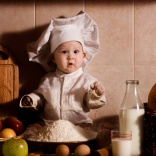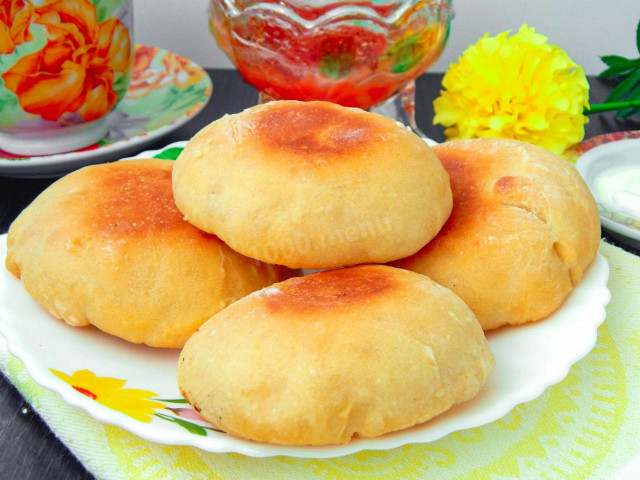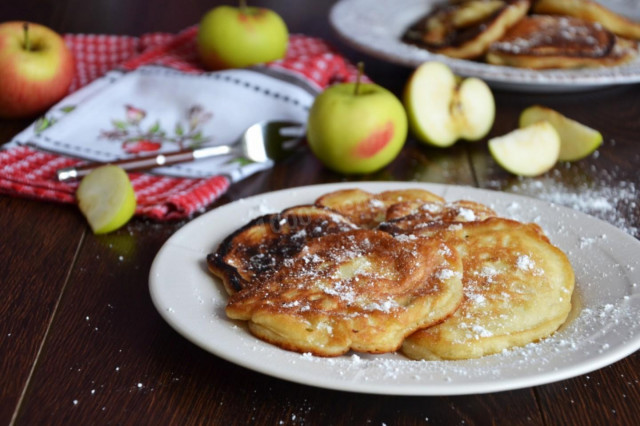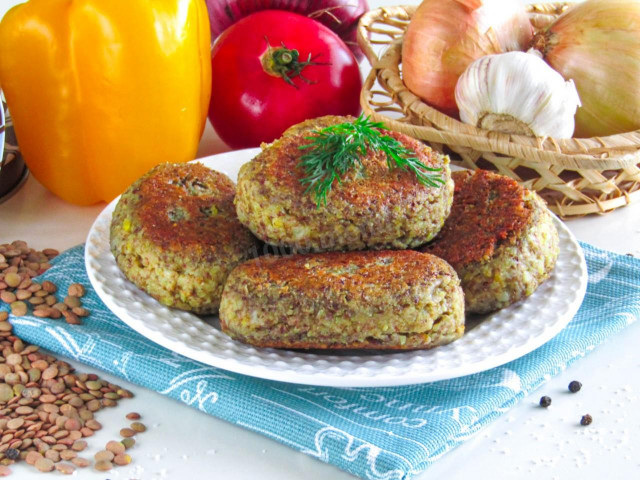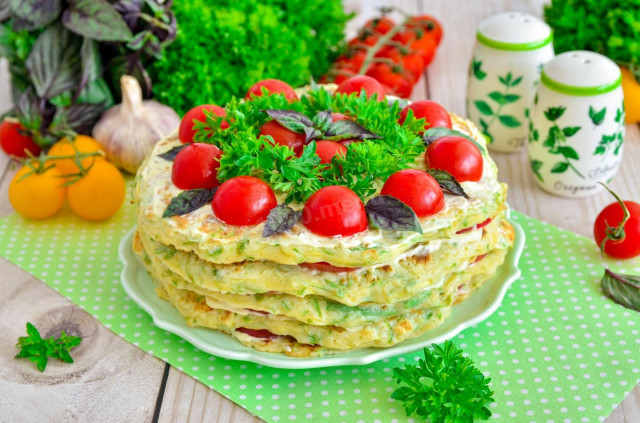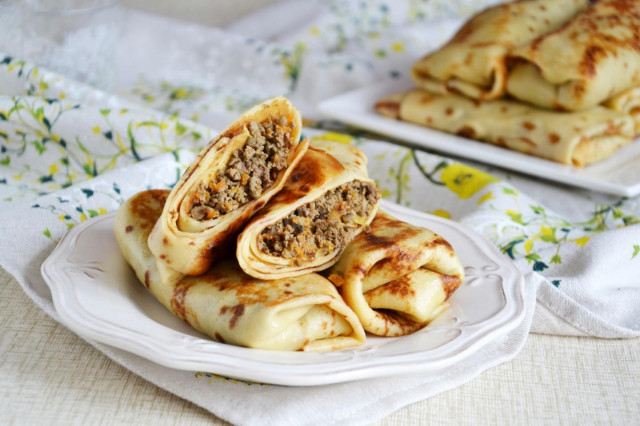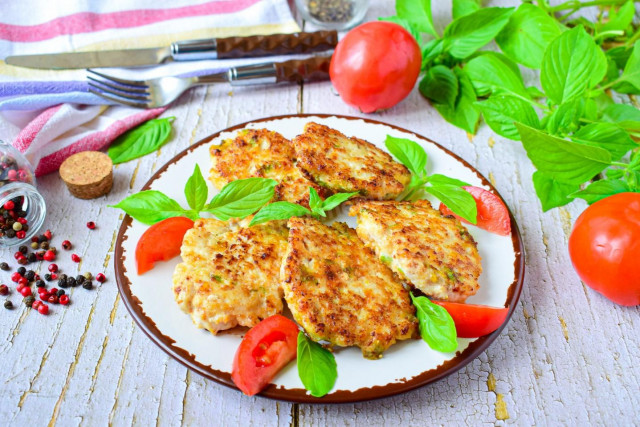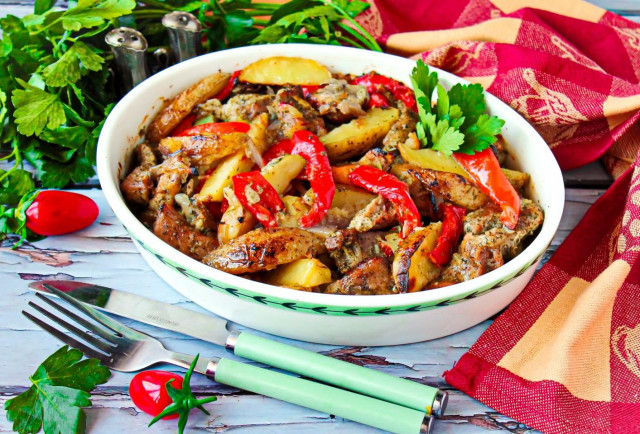Composition / ingredients
Step-by-step cooking
Step 1:
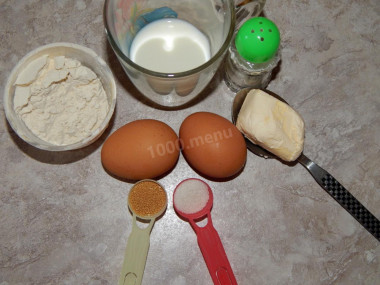
How to make buns in a frying pan? Prepare the products. These buns are made from yeast dough on sourdough. Prepare the sourdough. How to make sourdough? Heat the milk on gas or in the microwave, the temperature should be 37-38 degrees. In a warm environment, yeast is well activated, in a hot one it will die, and in a cold one it simply will not work.
Step 2:
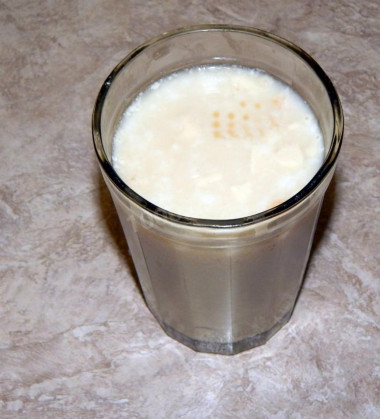
In a glass of warm milk, dissolve the sugar, stir so that it completely dissolves. Add the dry yeast and flour, mix again. Put the container in a warm place for 15 minutes. A yeast cap should appear on the surface of the mixture, which means that the yeast has been activated, the sourdough is prepared correctly.
Step 3:
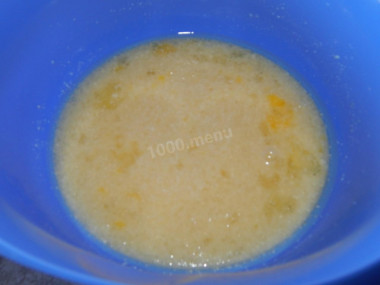
Pour the sourdough into a deep bowl, beat in the chicken egg, stir so that the egg spreads. Melt the butter in any way, cool it to room temperature. Pour the melted butter into a bowl with a dough preparation, add salt, mix.
Step 4:
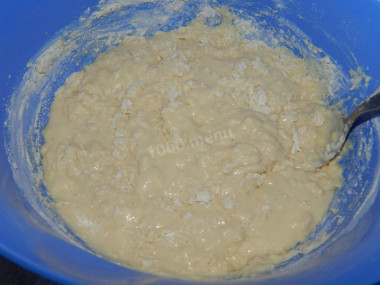
Sift wheat flour, it's better to do it a couple of times to saturate it with oxygen, then the baking will turn out especially airy. Pour the flour in parts into a bowl, kneading the dough each time. Flour can go a little more or a little less, it depends on the quality and manufacturer of flour. When the dough becomes difficult to stir with a spoon, put it on the table, sprinkled with flour, and continue to knead the dough with your hands.
Step 5:
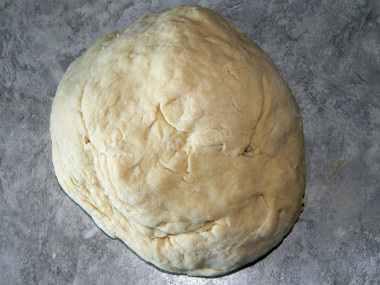
The dough should turn out soft, elastic, slightly sticky to the hands. Put it in a bowl, brush it with vegetable oil on top so that the dough is not covered with a crust. Cover the bowl with a towel and put it in a warm place for 1 hour. You can put it in the oven, preheated to 40 degrees. When the dough is ready, knead it and let it rise again. Then put it on the table, sprinkled with flour.
Step 6:
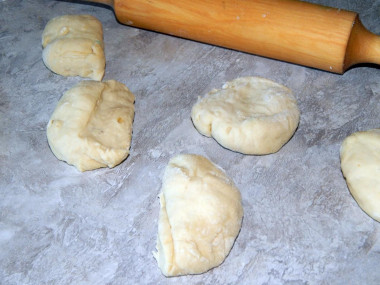
Make a thick sausage out of it. Cut it into equal-sized pieces of the desired size. Roll them into balls, flatten them slightly to make fluffy cakes. Let them stand in the heat, rise a little.
Step 7:
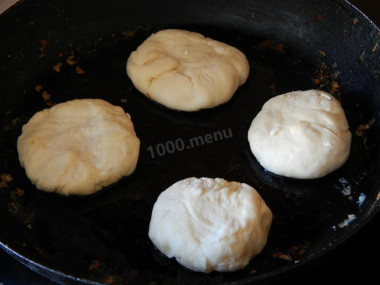
Heat the vegetable oil in a frying pan. Put the buns in a frying pan and fry them on medium heat first on one side, covering with a lid so that they are baked inside. Then turn the buns over and fry on the second side until browned. Remove the rolls from the pan and serve with sour cream, jam or condensed milk if desired. Bon appetit!
Be sure to wash the eggs before use, as even the seemingly clean shell may contain harmful bacteria. It is best to use food detergents and a brush.
Butter can be melted in the microwave or in a water bath.
How to melt butter in the microwave?
Cut the butter into small pieces and place it in a special container. To prevent the oil from splashing when heated, cover the oil vessel with a paper towel. The oil should be melted either at the lowest power or in defrosting mode. At first, five seconds will be enough. Next, if the butter has not melted yet, set it again for 5 seconds and start the microwave. Repeat the process several times until the desired result.
How to melt butter in a water bath?
You will need two containers of different diameters. Pour water into a large one and put it on the stove. Place the smaller container on top so that it is submerged in water by about half. Put the sliced butter into it. Under the influence of boiling water, the oil will begin to melt. Stir the oil slightly to speed up the process. As soon as the pieces of oil are completely dissolved, remove the container from the stove.
Any oils are useful only until a certain temperature is reached - the point of smoking, at which the oil begins to burn and toxic substances, including carcinogens, are formed in it. How to determine the roasting temperature and choose the best oil for frying, and which is better not to use at all, read here .
Caloric content of the products possible in the composition of the dish
- Whole cow's milk - 68 kcal/100g
- Milk 3.5% fat content - 64 kcal/100g
- Milk 3.2% fat content - 60 kcal/100g
- Milk 1.5% fat content - 47 kcal/100g
- Concentrated milk 7.5% fat content - 140 kcal/100g
- Milk 2.5% fat content - 54 kcal/100g
- Granulated sugar - 398 kcal/100g
- Sugar - 398 kcal/100g
- Butter 82% - 734 kcal/100g
- Amateur unsalted butter - 709 kcal/100g
- Unsalted peasant butter - 661 kcal/100g
- Peasant salted butter - 652 kcal/100g
- Melted butter - 869 kcal/100g
- Vegetable oil - 873 kcal/100g
- Salt - 0 kcal/100g
- Wheat flour - 325 kcal/100g
- Chicken egg - 80 kcal/100g
- Dry yeast - 410 kcal/100g
